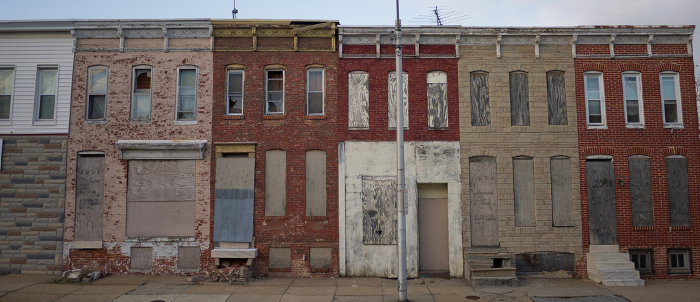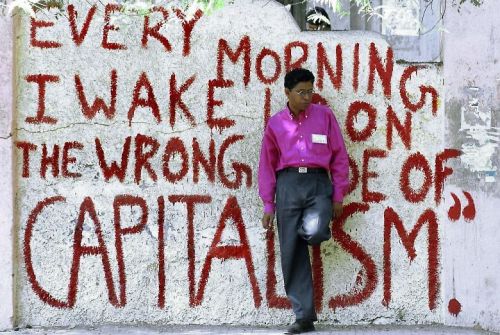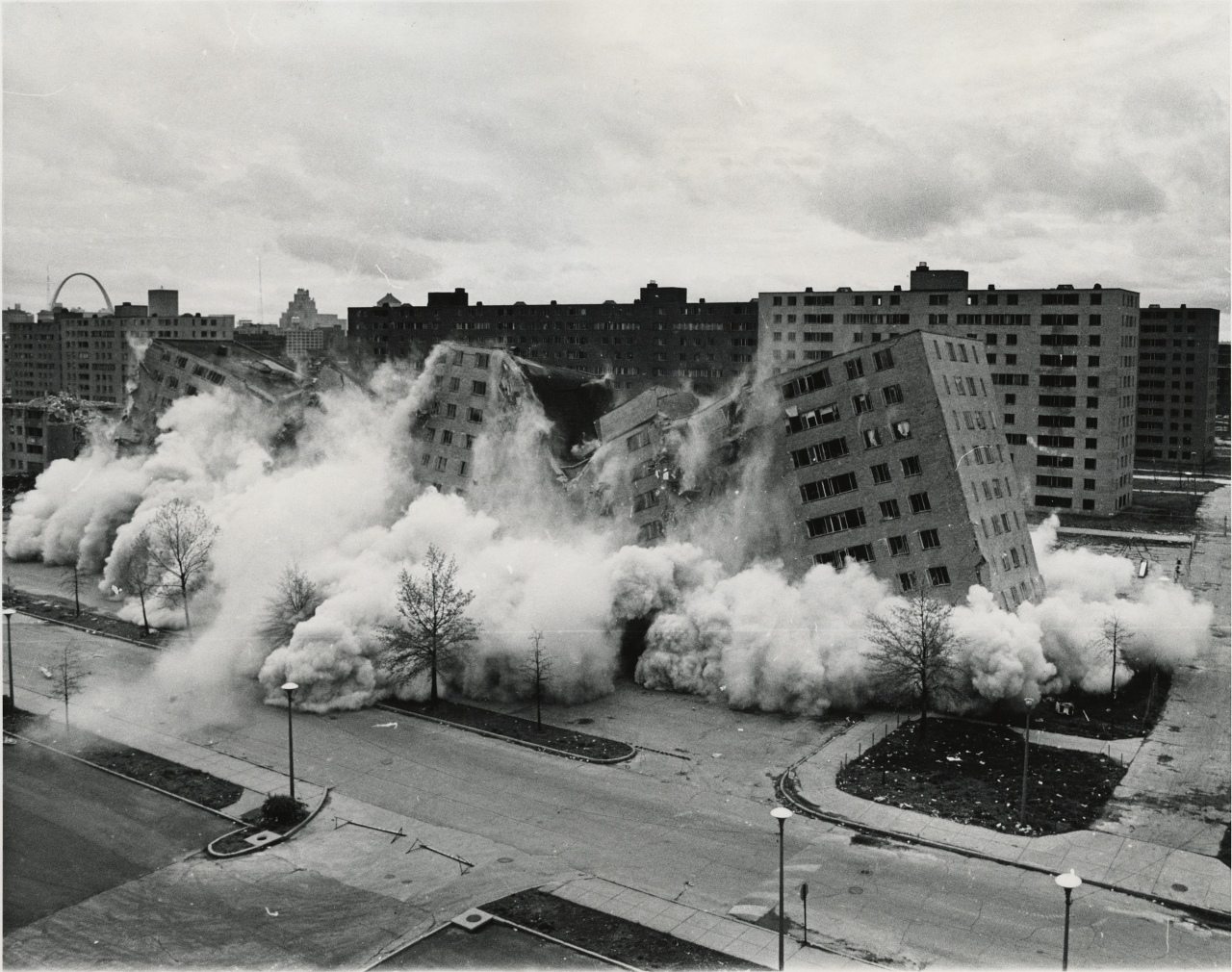
As reported in the Los Angeles Times, "RACE : And the Street Where You Live : AMERICAN APARTHEID: Segregation and the Making of the Underclass, By Douglas S. Massey and Nancy A. Denton, by Sam Fulwood III, (a reporter in The Times' Washington bureau, is writing "Blue Chip Black," a memoir examining the isolation of middle-class black Americans to be published next spring by New American Library/Dutton), on 30 May 1993 -- For most of the past 30 years, arguments involving the plight of the urban underclass have tended to track along boringly predictable lines.
According to conventional wisdom, middle-class black Americans used the affirmative action programs of the late 1960s to improve their status, then distanced themselves from the inner-cities and left their poorer relations in a wake of "underclass" crime, poverty and pathos.

This facile--and incomplete--analysis proved workable for both liberals and conservatives. Liberals blame structural inequality studding our materialistic society and have recently begun to recast their big-ticket political approaches as "investments" in long-neglected, inner-city areas. Meanwhile, conservatives point to the personal and behavioral failures of those mired in poverty and excuse themselves from any involvement or culpability in creating the situation.
In their haste to assign blame, however, sociologists and community activists, politicians and government leaders, journalists and business leaders have virtually ignored a solution that once held high promise for alleviating the poverty problem: residential integration.
Sociologists Douglas S. Massey and Nancy A. Denton reinvigorate this approach in their recently published book, "American Apartheid: Segregation in the Making of the Underclass." Their persuasive argument illustrates how "segregation, not middle class out-migration, is the key factor responsibile for the creation and perpetuation of communities characterized by persistent and spatially concentrated poverty."

While we may think America has always been segregated, the authors point out that before 1900, blacks and whites "lived side by side in American cities." "Even Chicago, Detroit, Cleveland, and Philadelphia--cities now well known for their large black ghettos--were not segregated then. In Southern cities such as Charleston, New Orleans, and Savannah, black servants and laborers lived on alleys and side streets near the mansions of their white employers. In this lost urban world, blacks were more likely to share a neighborhood with whites than with other blacks."
Early in the 20th Century, however, white Americans made a series of "deliberate decisions to deny blacks access to urban housing markets and to reinforce their spacial segregation." These decisions, the authors argue, are primarily responsible for the creation of the urban underclass.

Insofar as any Americans recognize that our nation is starkly divided into white and black encampments that rarely interact, it is viewed as a benign and acceptable development. "The residential segregation of blacks is viewed charitably as a 'natural' outcome of impersonal social and economic forces, the same forces that produced Italian and Polish neighborhoods in the past and that yield Mexican and Korean areas today," they write.
But "if segregation is permitted to continue," the authors counter, "poverty will inevitably deepen and become more persistent within a large share of the black community, crime and drugs will become more firmly rooted, and social institutions will fragment further under the weight of deteriorating conditions."

American apartheid was not inevitable.
In 1944, a time when the nation seemed more concerned about racial segregation, Gunnar Myrdal's "American Dilemma" warned that the ghettoization of blacks would prevent them from attaining anything but second-class status. Myrdal's protege, Kenneth B. Clark, expanded that theory in his 1965 classic "Dark Ghetto," arguing forcefully that "the dark ghetto's invisible walls have been erected by the white society, by those who have power, both to confine those who have no power and to perpetuate their powerlessness."
Over the last 30 years, however, a new breed of social scientists has refocused public attention away from urban realities and toward a "culture of poverty." Conservative ideologue Oscar Lewis coined that phrase in 1965 to describe minority (specifically Puerto Ricans in New York) behaviors that kept them from ascending the American ladder of opportunity. Later, Daniel Patrick Moynihan, then an assistant labor secretary in the Johnson Administration and now a Democratic senator from New York state, proposed that poor, unstable and female-led black households would entrench ghetto poverty into a "tangle of pathology."

A major fault line developed with the publication of two politically popular books in the late 1970s and early 1980s. William Julius Wilson's "The Declining Significance of Race: Blacks and Changing American Institutions" explained how the decline of America's manufacturing industries in big cities pulled the ladder of opportunity out from under blue-collar blacks, while the sons and daughters of affluent or middle-class black Americans grabbed the lion's share of race-based affirmative action opportunities for themselves. "The recent mobility patterns of blacks lend strong support to the view that economic class is clearly more important than race in predetermining job placement and occupational mobility," Wilson wrote.
His work was highly praised by both the right and left because his findings offered a window of opportunity for everyone's pet arguments. Liberals used it more persuasively, pointing to it for sustenance in their demands for federal intervention to help the underclass, which seemed unable to help itself. However, conservatives often cited Wilson's work as proof that opportunity abounds in America, if only once-oppressed people step out from under their self-pity and work for a better life.
In 1980, Ronald Reagan and his conservative revolution came to Washington with the expressed intention of drowning liberal ideologues. Charles Murray's "Losing Ground: American Social Policy 1950-1980," was the loudest and most influential voice among conservative sociologists. His theory held that the underclass fed on soft-headed and warm-hearted government programs that did nothing more than enshrine poverty.
Murray's book helped guide the Reagan agenda on domestic social reform.
Wilson fired back in 1987, stressing in "The Truly Disadvantaged" that the black underclass was at the bottom of the social heap because economic forces prevented inner-city dwellers from securing jobs. In other words, he suggested that the government programs were not the sole reason the underclass exists; rather, a network of factors including civil rights policies, economic restructuring and historic discrimination allowed some blacks to escape while locking others into the underclass.
Massey and Denton have little patience with either of the more recent arguments. "Theoretical concepts such as the culture of poverty, institutional racism, welfare disincentives and structural economic change have all been widely debated," they write. "None of these explanations, however, considers residential segregation to be an important contributing cause of urban poverty and the underclass."
Their persuasive academic model demonstrates their claim that a "culture of segregation" is created and reinforced by the refusal of isolated blacks to identify with mainstream America. "By isolating blacks within racially homogeneous neighborhoods and concentrating poverty within them, segregation creates an environment where failure to meet the ideal standards of American society loses its stigma," they write. "The force of oppositional culture is particularly powerful among African Americans because it is so strongly reinforced by residential segregation."

To be sure, the strains of oppositional culture even seep into the collective psyche of affluent black Americans, who often find themselves in solidarity with the underclass even as they are fleeing from living among them. "Although the problem is most acute for the poor, segregation confines all blacks to segregated neighborhoods regardless of social class, so working and middle-class blacks also have a very difficult time insulating their children from the competing values and attitudes of the street," Massey and Denton write.
Their work concludes with a five-point program of federal policies aimed at diminishing the governmental and institutional forces that sustain residential segregation. Their solutions are economically modest, drawing most heavily on federal monitoring and strict enforcement of existing anti-discrimination laws. "Residential desegregation should be considered an effort of national unity," they conclude. "For the most part, the policies we have recommended do not require major changes in legislation. What they require is political will." (source: Los Angeles Times)



No comments:
Post a Comment